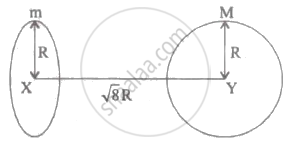Advertisements
Advertisements
Question
A ball is thrown vertically upwards. It goes to a height 20 m and then returns to the ground. Taking acceleration due to gravity g to be 10 ms-2 , find :
the final velocity of the ball on reaching the ground .
Solution
Given, maximum height reached, s = 20 m
Acceleration due to gravity, g = 10 m/s2
Let v' be the final velocity of the ball on reaching the ground.
Considering the motion from the highest point to ground,
Velocity at highest point = 0 = Initial velocity for downward journey of the ball.
Distance travelled, s = 20m
Using the third equation of motion,
v2 - u2 = 2gs
or, v2 - 0 = 2 (10) (20) m/s
or, v2 = 400 m/s
or, v = 20 m/s
APPEARS IN
RELATED QUESTIONS
Explain the following:
People often shake the branches of a tree for getting down its fruits.
How will the force of gravitation between two objects change if the distance between them is:
Doubled
Explain why:
The atmosphere does not escape.
Explain the difference between g and G.
State Newton's law of gravitation. What is the difference between:
Gravity and gravitation
The distance-time values for an object moving along straight line are given below:
| Time (s) | Distance (m) |
| 0 | 0 |
| 1 | 1 |
| 2 | 8 |
| 3 | 27 |
Law of gravitation gives the gravitational force between
As observed from earth, the sun appears to move in an approximate circular orbit. For the motion of another planet like mercury as observed from earth, this would ______.
Find the gravitational force of attraction between the ring and sphere as shown in the diagram, where the plane of the ring is perpendicular to the line joining the centres. If `sqrt8` R is the distance between the centres of a ring (of mass 'm')and a sphere (mass 'M') where both have equal radius 'R'.

Newton's universal law of gravitation applies to ______.
